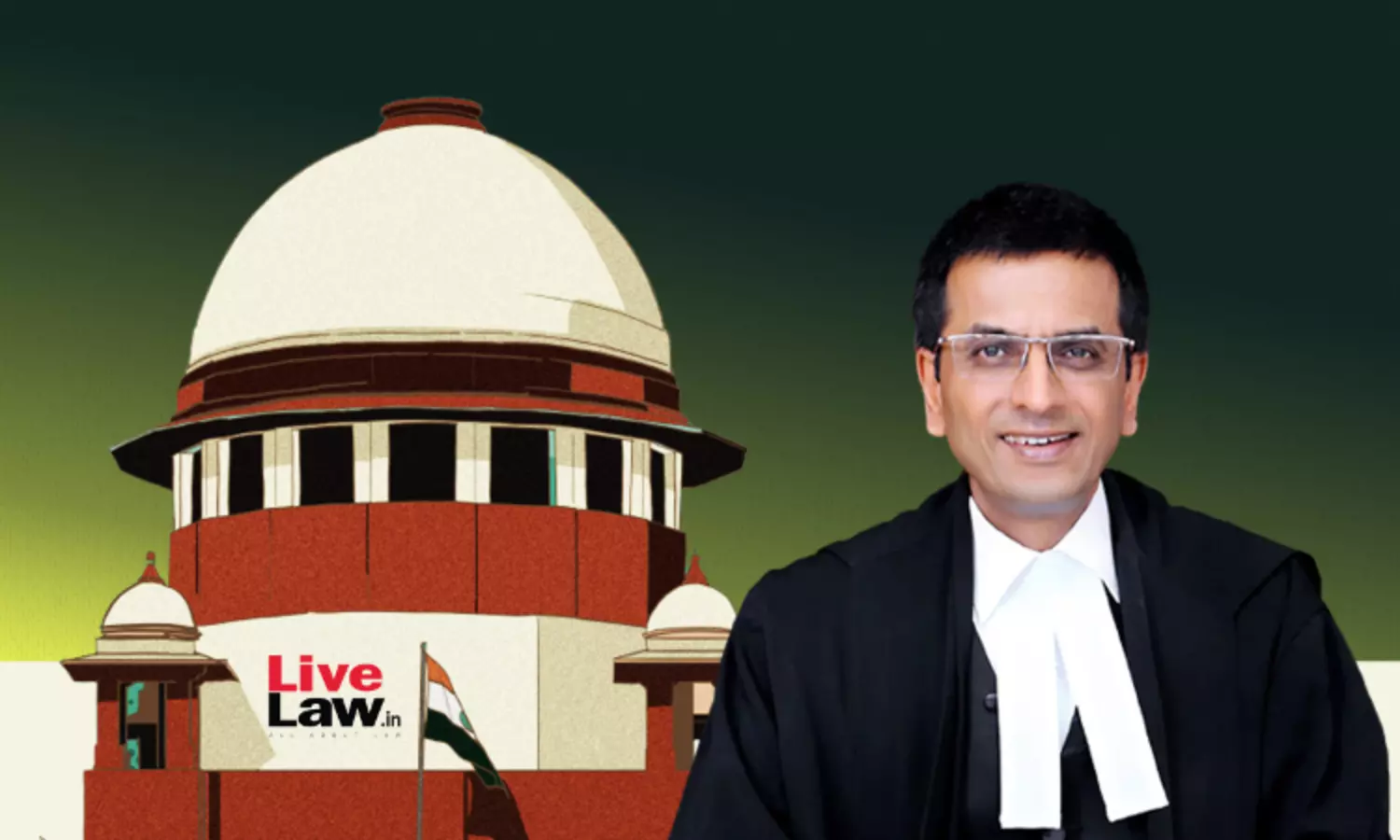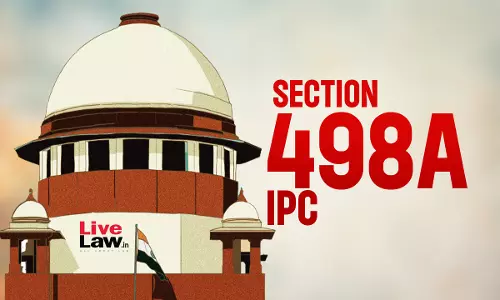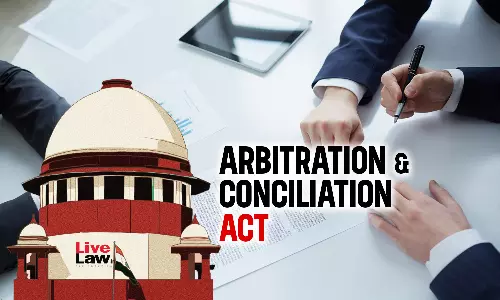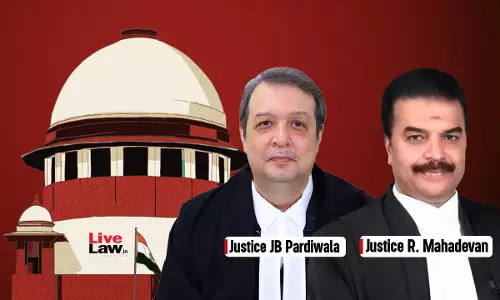Scheduled Castes Not A Homogeneous Class, Sub-classification One Of The Means To Achieve Substantive Equality: Supreme Court

The Supreme Court bench of seven judges headed by the Chief Justice of India (CJI) Dr D.Y. Chandrachud and comprising Justices B.R. Gavai, Vikram Nath, Bela M. Trivedi, Pankaj Mithal, Manoj Misra and Satish Chandra Sharma today, by 6:1 majority, held that sub-division of Scheduled Caste to provide reservation to the weakest out of the weak is permissible.Justice Bela Trivedi dissented....
The Supreme Court bench of seven judges headed by the Chief Justice of India (CJI) Dr D.Y. Chandrachud and comprising Justices B.R. Gavai, Vikram Nath, Bela M. Trivedi, Pankaj Mithal, Manoj Misra and Satish Chandra Sharma today, by 6:1 majority, held that sub-division of Scheduled Caste to provide reservation to the weakest out of the weak is permissible.
Justice Bela Trivedi dissented.
CJI Chandrachud's opinion
Chief Justice Chandrachud authored the opinion for Justice Misra and himself. He formulated four issues:
Issues | Held |
Whether subclassification is permissible | Yes, Scheduled Castes can be further classified if: (a) there is a rational principle for differentiation; and (b) if the rational principle has a nexus with the purpose of sub-classification “Sub-classification is one of the means to achieve substantive equality” |
Is Scheduled Caste homogenous? | No, because “empirical evidence indicates that there is inequality even within the Scheduled Castes. The Scheduled Castes are not a homogenous integrated class” |
Whether Article 341 creates a homogenous class by deeming fiction | No, because “the inclusion does not automatically lead to the formation of a uniform and internally homogenous class which cannot be further classified. Article 341 creates a legal fiction for the limited purpose of identification of Scheduled Castes by distinguishing them from other groups”. |
Limit to the scope of subclassification | “While the State may embark on an exercise of sub-classification, it must do so on the basis of quantifiable and demonstrable data bearing on levels of backwardness and representation in the services of the State." “The model of sub-classification will be unconstitutional if it excludes some Scheduled Castes from the benefit” |
The underlying reasoning behind Justice Chandrachud's opinion is the principle of substantive equality. He stated: “The Constitution, after the numerous turbulations within each of the issues traced, today advances a more substantive reading of the equality provision, expanding the sphere and the scope of reservation to ensure that the benefits trickle down to those who need it the most. However, traces of the friction between merit and reservation continue to persist even after the amendments to Articles 16 and 335.”
He added: “This Court has, with a few divergences, continued to uphold the binary of merit and reservations. The understanding of the Courts at the end of this phase was that the scope of reservation must be expanded to ensure substantive equality in spite of its dilution of efficiency, thereby continuing to read the requirement of efficiency into Article 16(4).”
Justice Chandrachud stated that in the formative years, Article 14 was interpreted to envisage formal equality through the reasonable classification doctrine which meant 'like should be treated like'. However, this doctrine was not extended to Articles 15(1) and 16(1) in the domain of reservation on the underlying assumption that 'not all persons are alike' to the realm of reservation. This was reflected in the State of Madras v. Champakam Dorairajan (1951), wherein the court held that the reservation of seats in State-aided or funded education institutions based on caste, religion, race etc violated Article 29. Through the Constitution (First Amendment) Act, 1951, Article 15(4) was included to overcome the impediment caused by this judgment.
Subsequently, in the same year, B Venkataramana v. The State of Tamil Nadu (1951) held that Article 16(4) permitted Harijans and the backward Hindus to be considered as 'backward classes' and any other representation would be discriminatory based on the ground of caste.
Justice Chandrachud opined that two judgments adopted a formalistic and 'reservation-limiting approach' in reading constitutional provisions. It viewed reservation as “an exception to the principle of equal opportunity in Articles 15(1) and 16(1)”. Therefore, “reservation or any other form of affirmative action was regarding as antithetical to the equality principle and not a re-statement of it”.
With the expansive of scope of reservation in services, the court was faced with the issue of whether it would dilute the overall efficiency of the service. Article 335 emphasised that the State must maintain the efficiency of administration while deciding the claims of Scheduled Castes and Scheduled Tribes in the appointment of services.
Reservation in promotion
Subsequent judgments deal with the issue of whether reservation in promotion was detrimental to efficiency. In General Management, Southern Railway v. Rangachari (1962), the majority held that although reservations in promotions are detrimental to efficiency, a substantive reading of Article 16(4) would allow that. It interpreted the phrase “matters relating to employment” under Article 16(1) to also include promotion. This was overruled in Indra Sawhney v. UOI & Ors (1992).
Subsequently, the Constitution (Seventy-seventh Amendment) Act, 1995 included clause 4A into Article 16, permitting reservation for the Scheduled Castes and the Scheduled Tribes in promotion.
Consequential seniority
In Union of India v. Virpal Singh Chauhan(1995), the court was faced with the issue of whether a general candidate, who was promoted after the Scheduled Caste or Scheduled Tribe candidate, would regain his seniority over general candidates (catch-up rule). The court held that though the catch-up rule is not implicit in Article 16, it is a constitutionally valid practice to maintain efficiency.
Through the Constitution (Eighty-fifth Amendment) Act, 2001, Article 16(4A) was amended to enable the State to provide reservation in promotion with consequential seniority.
Relaxation of qualifying marks
In Indra Sawhney, the court held that relaxation of qualifying marks in promotion would result in inefficiency of administration. This was specifically reiterated in S Vinod Kumar v. UOI (1996). However, a proviso to Article 335 by the Constitution (Eighty-second) Amendment Act, 2000 was introduced to overcome the judgments. It was held that lowering the standards of evaluation would not be inconsistent with the maintenance of efficiency.
Commenting on both abovementioned amendments, Justice Chandrachud in the present case noted: “The amendments recognise the difficulties and struggles faced by members of the Scheduled Castes and the Scheduled Tribes during promotions. In a formal sense, the criteria of selection for promotions a priori excludes the members of the Scheduled Castes and Scheduled Tribes because the criteria which are considered to be appropriate are not accessible to them. In a more informal but substantive manner, the members of the Scheduled Castes and the Scheduled Tribes are often unable to climb up the ladder because of the stigma of incompetence held against candidates who are selected through reservation. The stereotype operates against them because they are externalized as “affirmative action beneficiaries” or “quota candidates”.”
Permissible percentage of reservation
While in Indra Sawhney, the court held that reservation cannot exceed 50 percent, the States were faced with the issue of whether unfilled seats of the reserved category could be carried forward to next year and whether it could be counted while calculating the total percentage of reservation seats in a given year (known as carry forward rule).
In T. Devadasan v. UOI (1964), the majority held that the carry forward rule would abrogate the equal opportunity principle and impair efficiency. However, Justice Subba Rao dissented. He argued that a harmonious reading of Articles 16, 46, and 335 is required. He held that “any provision” in Article 16(4) is wide enough to include the carry forward rule.
In NM Thomas v. State of Kerala (1976), the court finally took an expansive reading and stated that Article 16(4) cannot be treated as an exception to equality. Instead, it was “illustration of constitutionally sanctified classification”. In this case, Rule 13AA of the Kerala State and Subordinate Services Rules, 1958, which relaxed the qualifying criteria for candidates belonging to Scheduled Castes and Scheduled Tribes, was challenged.
By the Constitution (Eighty-first) Amendment Act, 2000, Article 16(4B) was introduced, which implemented the carry forward rule.
Background
The issue arises from a reference made by a five-judge bench of the Supreme Court The State of Punjab & Ors v. Davinder Singh & Ors (2020) against the judgment of another five-judge bench in E.V. Chinnaiah v. The State of Andhra Pradesh & Ors (2004).
In E.V. Chinnaiah, the bench of Justices N. Santosh Hedge, S.N. Variava, B.P. Singh, H.K. Sema, and S.B. Sinha held that a sub-classification of the Scheduled Caste category is not permissible. The court held the Andhra Pradesh Scheduled Castes (Rationalisation of Reservations) Act, 2000 unconstitutional in this case. The legislation apportioned the benefit of reservation among Scheduled Castes into four groups based on the recommendation of the Ramachandran Raju Commission constituted by the government. The commission found inter-se backwardness amongst the Scheduled Castes in the State in reservation in education and appointments.
Article 341(1) of the Indian Constitution grants the President of India the power to notify castes, races, or tribes as Scheduled Caste in consultation with the Governor of the State. The court in E.V. Chinnaiah held that once the caste is put on the Presidential List under Article 341(1), it becomes a homogenous class and there cannot be any further division of the said caste.
It was also the issue in E.V. Chinnaiah if the reasoning of Indra Sawhney, wherein the court permitted subclassification of Other Backward Communities as backward and more backward based on their comparative underdeveloped, could be applied for the subclassification under the Scheduled Caste.
The court held that Indra Sawhney's judgment does not apply to the subclassification of Scheduled Caste because the judgment itself specified that subdivision of Other Backward Classes does not apply to Scheduled Castes and Scheduled Tribes.
However, the bench comprising Arun Mishra, Indira Banerjee, Vineet Saran, M.R. Shah, and Aniruddha Bose in Davinder Singh disagreed with the E.V. Chinnaiah judgment. In this case, the validity of Section 4(5) of the Punjab Scheduled Castes and Backward Classes (Reservation in Services) Act, 2006 was in question. The provision provided for 50 percent reservation out of the 25 percent reserved for the Scheduled Caste to Balmikis and Mazhabi Sikhs as the first preference amongst the Scheduled Castes. This was held unconstitutional by the High Court of Punjab and Haryana, which relied on E.V. Chinniah's judgment.
The Supreme Court however overturned the high court's order. It even held that in Indra Sawhney, the court admitted the word 'backward classes' included within it Scheduled Castes and Scheduled Tribes and they stood on the same footing in terms of the application of Article 16(4) which provides for reservation in public employment to backward classes.
The court had said: “The Scheduled Castes and Scheduled Tribes admittedly are backward, and the same yardstick would apply to all. In Indira Sawhney, it was held that it is permissible to make subclassification within socially and educationally backward classes. That discussion would be applicable for Scheduled Castes and Scheduled Tribes as they admittedly fall under Article 16(4).”
Similar pleas challenged the various notifications and legislations of different States including Haryana and Tamil Nadu that subclassified within Scheduled Castes to provide preferential treatment to the most downtrodden of the class.
Other reports on the judgement can be read here.
Case Details : State Of Punjab And Ors. v Davinder Singh And Ors. C.A. No. 2317/2011
Citation : 2024 LiveLaw (SC) 538




